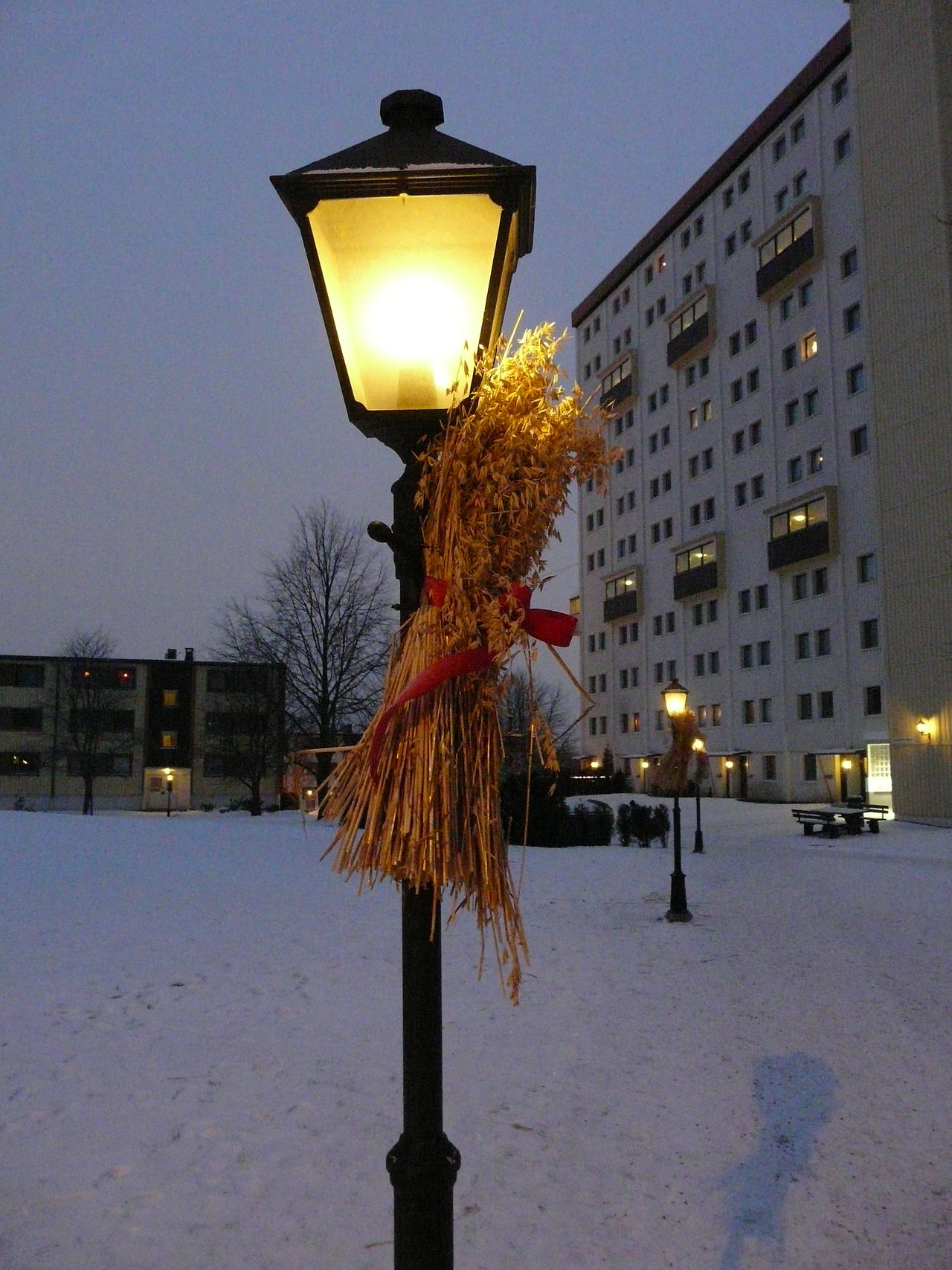 The tradition of putting up a julenek (Christmas sheaf) at Christmastime goes back a few centuries. It was supposed to be a large cut of a farmer’s best grain, and the last thing to be harvested in the autumn. Also called kornnek, fuglenek or kornbånd (grain sheaf, bird sheaf or grain band), the julenek could be made of wheat, oats, rye or barley.
The tradition of putting up a julenek (Christmas sheaf) at Christmastime goes back a few centuries. It was supposed to be a large cut of a farmer’s best grain, and the last thing to be harvested in the autumn. Also called kornnek, fuglenek or kornbånd (grain sheaf, bird sheaf or grain band), the julenek could be made of wheat, oats, rye or barley.
It is unclear whether the practice is simply to feed and watch birds, allowing them to join the season’s abundance, or if there are deeper superstitions behind it. As it goes with many traditions, the origin story has been watered down with time. It may be that farmers wanted to ensure a thriving crop in the new year, and were sharing their plentitude with a fertility spirit as a down payment on the next year’s harvest. Late on Christmas Eve, the farmer tied a bushy bundle onto a pole and the number and type of birds that flocked to it on Christmas Day were thought to signify the success of next year’s crop.
The julenek is a common theme on Christmas cards and was also commemorated by Adolph Tidemand in the painting Juleskikk—Christmas Traditions—as everyone gathers to watch the grain being hoisted atop the stabbur (storehouse).
In bygone years, feed grains would be hand-cut with a sickle, then bound and hung out to dry on a pole, or propped against each other in the field. Once totally dry, they would be stored in a granary. These two farmers look in good spirits demonstrating the former method, but it does look like back-breaking work. Here is a demonstration of a 1950s binding machine in action.
Today, families might display their julenek in a sheaf, wreath or braid shape bound with a red ribbon, as shown by this barley producer, Dyrk Mølle, in Nord-Østerdal. City and country folk alike carry on the koselig (cozy) tradition, and in the spirit of Christmas generosity, the festive julenek is hung on the front door or gate as an avian feast.
